$2.00... more info
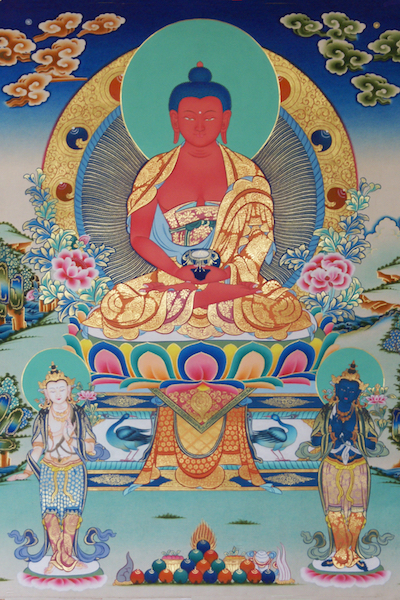
Amitabha is one of the five Wisdom Buddhas and is located in madalas in the west and is red in color. He resides in Sukhavati (Tib. Dewachen) and sits in the full-lotus with his hands in the meditation position and sometimes has his left hand holding a begging bowl. He belongs to the lotus...
$2.00 Buy Now
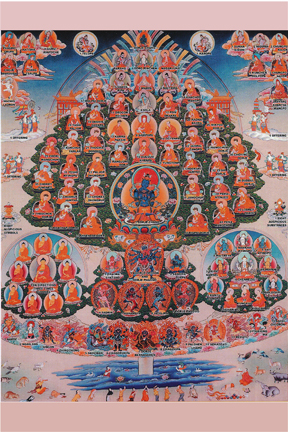
The Kagyu lineage tree not only has the lineage masters down to the 16th Karmapa, but it also contains the important sacred sangha and yidams and protectors of the lineage and other important realized individuals such as Niguma, Khentse Wangpo, Machtig Ladron, Pagmo Drukpa and Dolpopa. This lineage...
$2.00 Buy Now
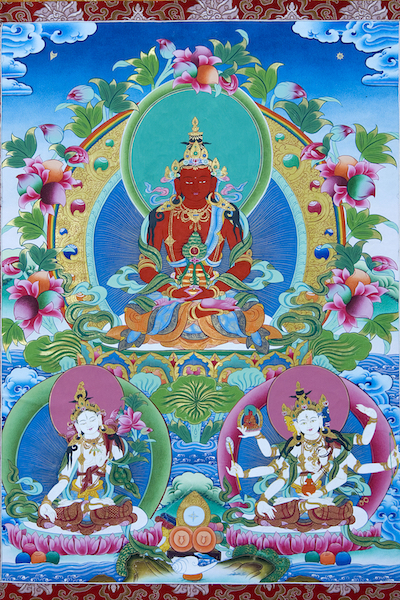
Amitayus is a diety connected with long life. He is very closely connected to the Buddha Amitabha and is on a lotus throne, red in color, sitting in the vajra posture, with his hands in his lap in the meditation (zen) mudra and is holding a vase of long life amrita in his lap. At the bottom are the...
$2.00 Buy Now

Thrangu Rinpoche has written a 200 page book on Journey of the Mind:Preparing for the Bardo in Life, Dreams, Meditation, while Dying, and Rebirth (available on this website under Thrangu Rinpoche's works ). The Bardo is the interval between between death and rebirth in a new body. For a...
$2.00 Buy Now
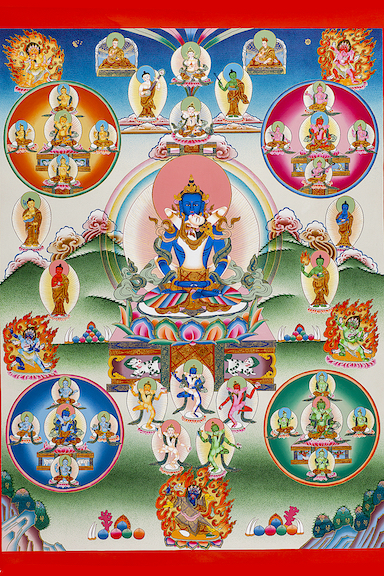
Thrangu Rinpoche has written a 200 page book on Journey of the Mind:Preparing for the Bardo in Life, Dreams, Meditation, while Dying, and Rebirth (available on this website under Thrangu Rinpoche's works ). The Bardo is the interval between between death and rebirth in a new body. For a...
$2.00 Buy Now
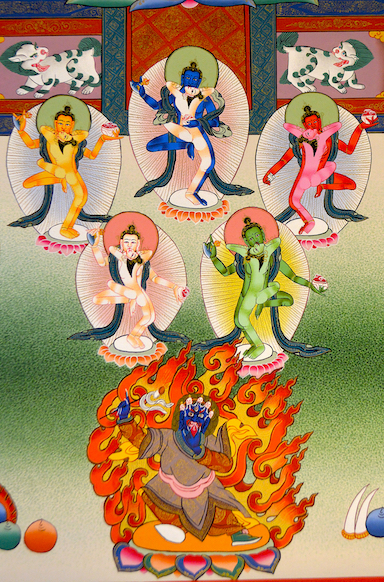
Thrangu Rinpoche has written a 200 page book on Journey of the Mind:Preparing for the Bardo in Life, Dreams, Meditation, while Dying, and Rebirth (available on this website under Thrangu Rinpoche's works ). The Bardo is the interval between between death and rebirth in a new body. For a...
$2.00 Buy Now
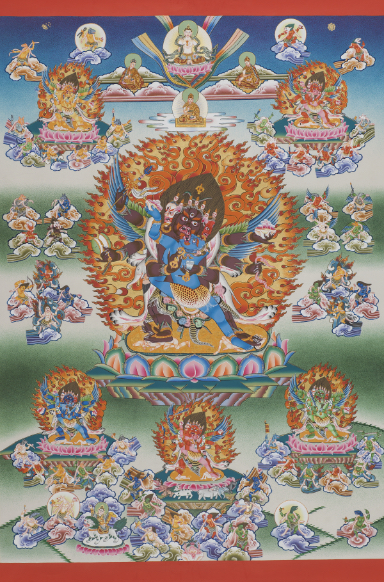
Thrangu Rinpoche has written a 200 page book on Journey of the Mind:Preparing for the Bardo in Life, Dreams, Meditation, while Dying, and Rebirth (available on this website under Thrangu Rinpoche's works ). The Bardo is the interval between between death and rebirth in a new body. For a...
$2.00 Buy Now
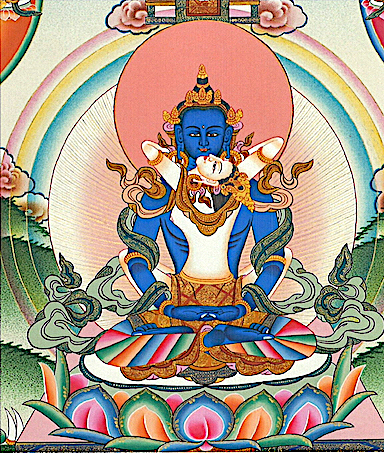
Thrangu Rinpoche has written a 200 page book on Journey of the Mind:Preparing for the Bardo in Life, Dreams, Meditation, while Dying, and Rebirth (available on this website under Thrangu Rinpoche's works ). The Bardo is the interval between between death and rebirth in a new body. For a...
$2.00... more info
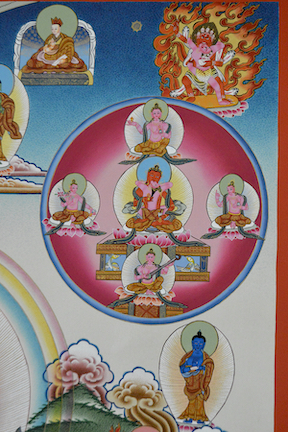
Among the Peaceful Deities in the Bardo are the buddhas of the five Buddha families. Each buddha is surrounded by four attendants pictures here in each of the four directions. They are depicted in union in the YabYung position. This should not be taken to be sexual, but as symbolically...
$2.00 Buy Now
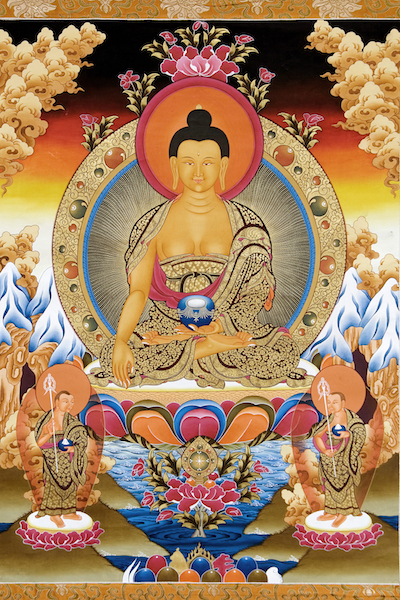
He is shown in the traditional pose of touching the ground with his right hand and holding his begging bowl in his left hand. When the was asked if he had reached enlightenment, he touched the ground and said "I have as the earth is my witness." He wears the traditional clothes of a monk which are...
$2.00 Buy Now
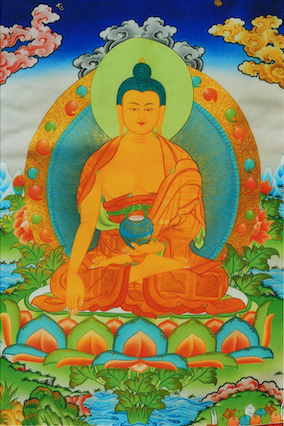
Buddha on a Lotus Throne shows the Buddha sitting in the vajra posture with his right hand touching the earth and left hand holding a bowl of amrita. The toughting the earth position comes from the time that the Buddha was meditating under the Bodhi Tree and king of maras came to him and asked him...
$2.00 Buy Now
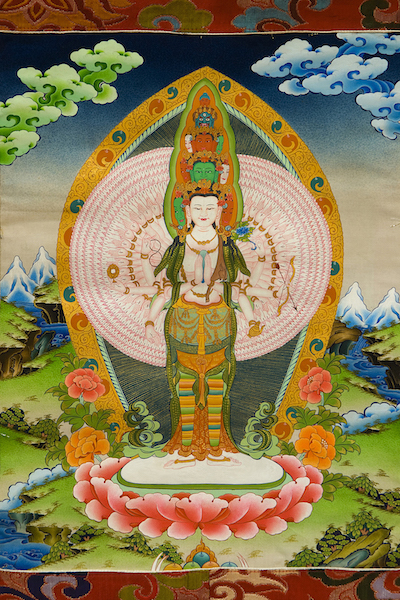
It is said that Chenrezig felt so much compassion for all the suffering in the world that his head broke into 11 pieces and he developed 1,000 arms to help all those suffering. He is depicted having 8 arms standing on a moon disk and 16 petaled lotus, with 11 heads and 1,000 arms each with an eye...
$2.00 Buy Now

Tara is the most popular female deity in Tibet and there are actually 21 aspects to Tara. Green Tara is said to have arisen from the tears of Chenrezig. The Green Tara practice which is usually done early in the morning each of these 21 aspects are given. Green Tara is emerald green to represent...
$2.00 Buy Now
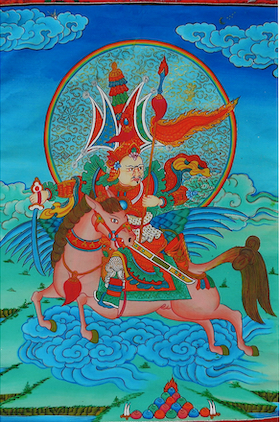
One of the oldest epics in Tibetan literature is the story of Gesar of Ling which was around long before Tibet became a Buddhist Country in the Seventh Century CE. This legend is very long and used to be told from memory by Tibetan story tellers much like the Odessy was told word of mouth in...
$2.00 Buy Now
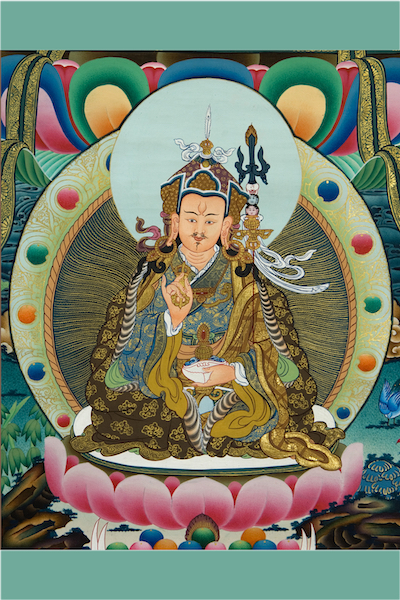
Guru Rinpoche (Padmasambhava) was considered a second Buddha in Tibet because he brought Buddhism from India to Tibet and established its first lineage--the Nyingma lineage. In this depiction Guru Rinpoche is in the mudra of the Konchog Chidu Practice on a lotus throne with his staff which...
$2.00 Buy Now
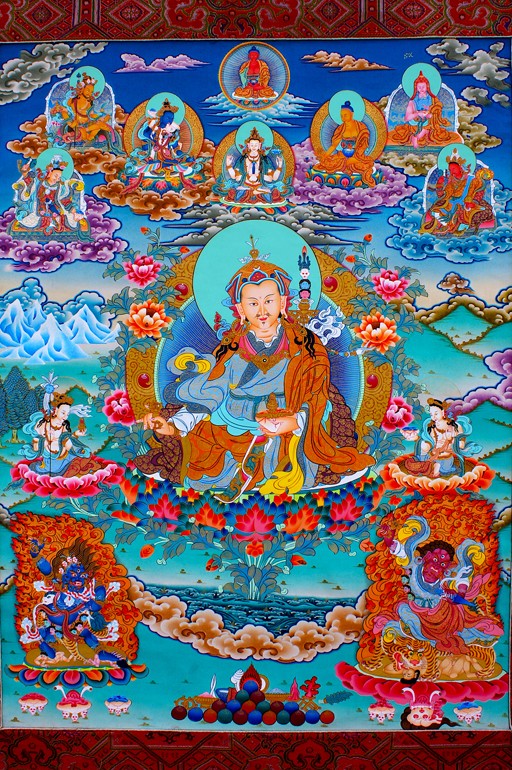
Guru Rinpoche (Skt. Padmasambhava) is considered the second Buddha in Tibet introduced Buddhist practice to Tibet. Guru Rinpoche had to subdue many of the local deities who were resisting conversion to Buddhism and there for is depicted as a magician with a staff with the three heads representing...
$2.00 Buy Now
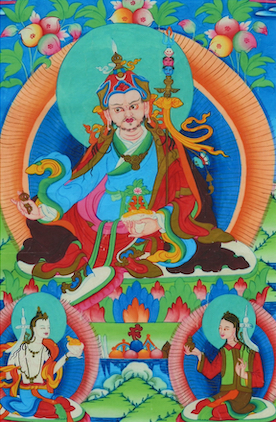
Guru Rinpoche (Padmasambhava) was considered a second Buddha in Tibet because he brought Buddhism from India to Tibet and established its first lineage--the Nyingma lineage. In this picture he is depicted in his usual costume with his staff with three heads holding a Vajra in this right hand in...
$2.00 Buy Now
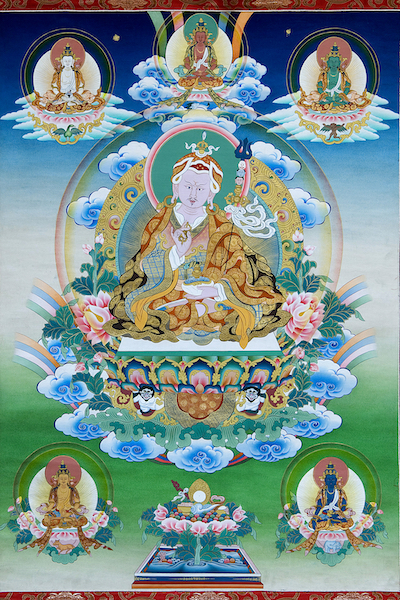
Guru Rinpoche (Skt. Padmasambhava) is considered the second Buddha in Tibet introduced Buddhist practice to Tibet. Guru Rinpoche had to subdhu many of the local deities who were resisting conversion to Buddhism and there for is depicted as a magician with a staff with the three heads representing...
$2.00 Buy Now
Max: 1
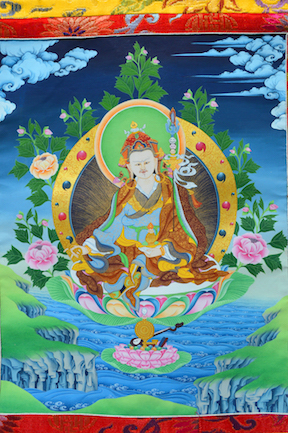
Guru Rinpoche was considered a second Buddha in Tibet because he was invited to Tibet buy King Trisong Detsen and brought Buddhism Tibet. He established Buddhism in Tibet in the 7th century CE, helped translate the Indian Buddhist works into Tibetan, built the first Budhist monastery in Tibet...
$2.00 Buy Now
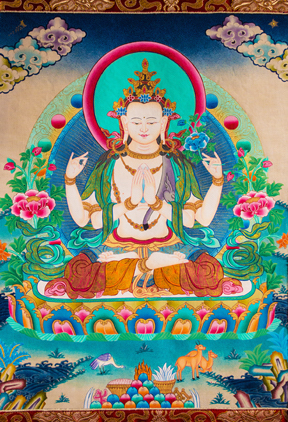
Chenrezig also known by his Sanskrit name Avalokiteshvara is the most popular deity in Tibet. He is the deity of representing compassion and his mantra is the famous: OM MANI PEDME HUNG. The Chenrezig practice is done every night by the children attending Thrangu Rinpoche's grade school in...
$2.00 Buy Now
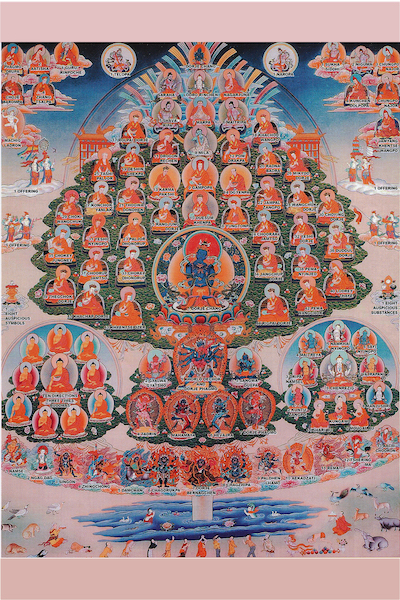
The general practice of meditation in the Vajrayana is to begin with Shamatha medittion and then Vipashyana meditation and to do the Four Common Preliminaries (the Four Thoughts that Turn the Mind) and then to do the special preliminaries called Ngöndro. It is here that one will need a mala (a...
$2.00 Buy Now
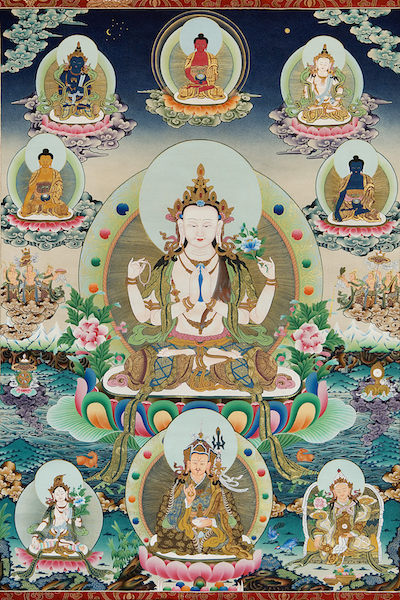
Chenrezig also known by his Sanskrit name Avalokiteshvara is the most popular deity in Tibet. He is the deity of representing compassion and his mantra is the famous: OM MANI PEDME HUNG. The Chenrezig practice is done every night by the children attending his school in Nepal. The practice has...
$2.00 Buy Now
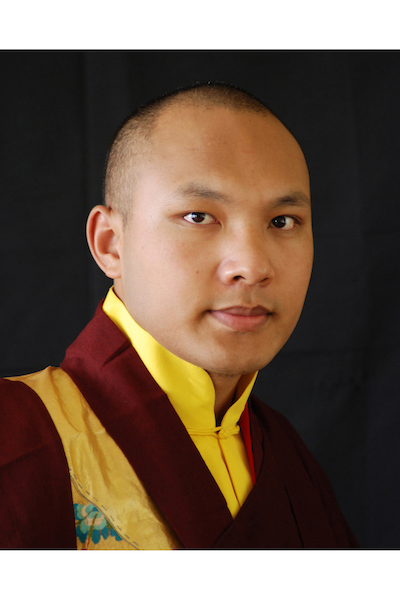
The seventeenth Gyalwa Karmapa, Orgyen Thrinley Dorje is head of the Karma Kagyu Lineage. We have an especially nice photo of him. This set includes a 8 x 10 inch and a 4 x 6 inch high quality photo (300dpi) and free postage for $ 2.00. You can also download this image on this website for $ 0.50.
$2.00 Buy Now

The deities in Tibetan Buddhism are divided into peaceful and wrathful deities. The wrathful ones are often Dharma protectors and one of the most famous dharma protector is Mahakala. Mahakala comes in many forms with the two-armed, four-armed and six-armed Mahaka being most common. Mahakala is...
$2.00 Buy Now
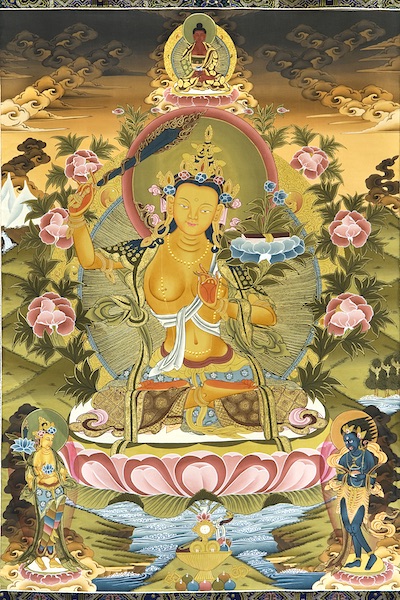
Manjushri is the embodiment of the wisdom of all the buddhas. He is golden in color and holds a flaming sword in this right hand and a lotus flower holding a book of the Prajnaparamita teachings on emptiness in his left hand. His sword cuts through all ignorance so that the true nature of phenomena...
$2.00 Buy Now
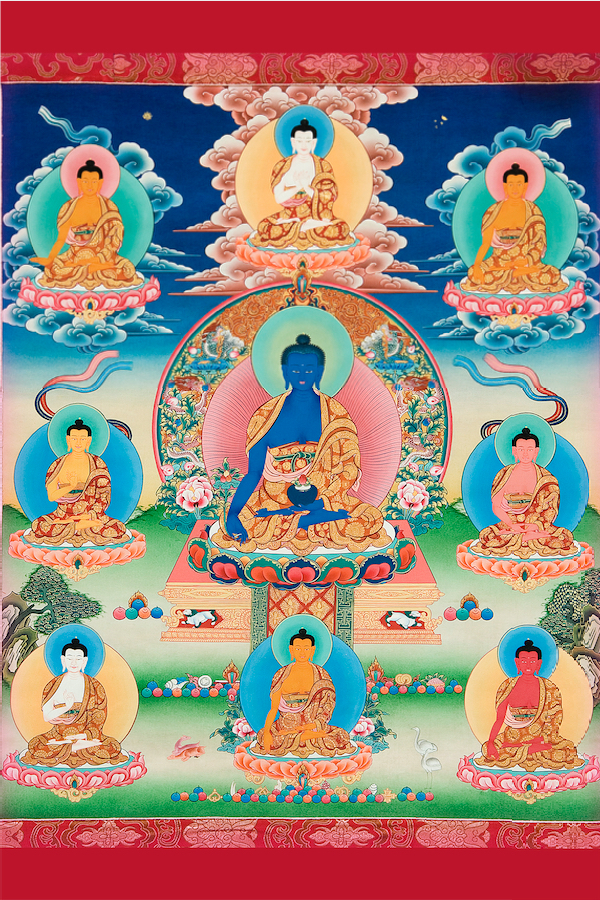
In the Medicine Buddha practice there is the main Medicine Buddha who is shown here the color of lapis and holding the arura plant in the offering gesture in his right hand and a bowl of medicine buddha in his left. He is directly under the Akshobhya Wisdom Buddha whose family he belongs to. The...
$2.00 Buy Now
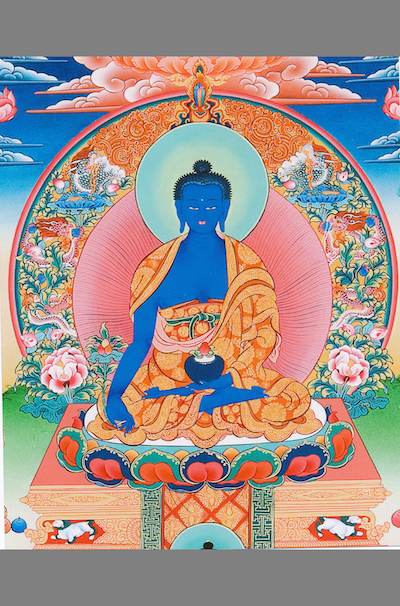
Thrangu Rinpoche says that all deities are very similar in that they devote themselves to helping sentient beings. But beings have many different propensities and karma, so the deities manifest in different forms. The Medicine Buddha looks similar to the Shakyamuni Buddha touching the ground, but...
$2.00 Buy Now
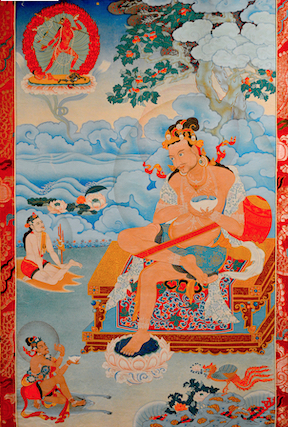
Naropa lived in India and taught at Nalanda Monastic University in the Eleventh century was approached one day while he was studying by a dakini who asked him if he understood what he was reading and when Naropa said, "yes" she became very upset and told him he should go see "her brother: Tilopa....
$2.00 Buy Now

This Photo of Thrangu Rinpoche was taken in 2008 by Michael Walsh. This set includes a 8 x 10 inch and a 4 x 6 inch high quality photo (300dpi) and free postage for $ 2.00. You can also download this image on this website for $ 0.50.
$2.00 Buy Now
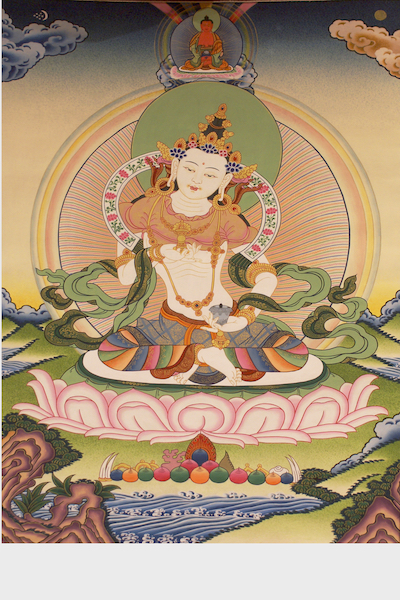
Vajrasattva is the deity representing purification. He is white signifying purity and sits on a moon disk on top of a lotus throne. In his left hand is an upside down bell resting on his left thigh and in his right hand is a vajra placed at his hear level. Above his head is Amitabha because he...
$2.00 Buy Now
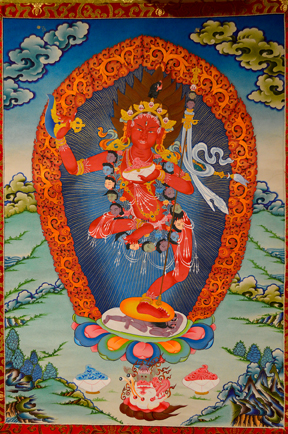
Vajrayogini is a major Deity in the Kagyu lineage who was introduced into the lineage by Naropa. Vajrayogini has since been adopted into other lineages and is often depicted in several different poses. This particular posture shows Vajrayogini red in color with flames around her showing that she is...
$2.00 Buy Now
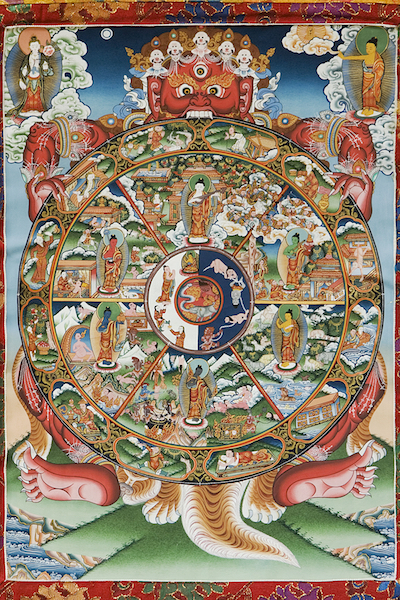
The Wheel of Samsara is a graphical depiction of samsara with the god of death symbolically consuming all of samsara. The outer rim showing the 12 links of dependent origination, the next section showing the six realms of samsara with one of the wisdom buddhas “ruling” this realm which is...
$2.00 Buy Now
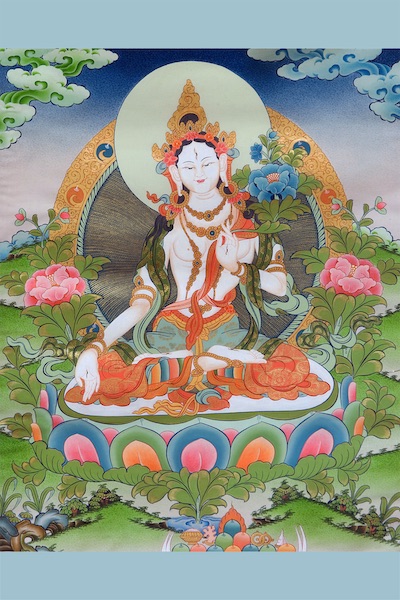
Tara is connected closely to protection. Often Tibetans will prayer to Tara to protect them from violence, unjust incarceration, dangerous animals which are much more common in India, drowning in an ocean and so on. There are actually 21 taras each with a different color, family, and type of...

































